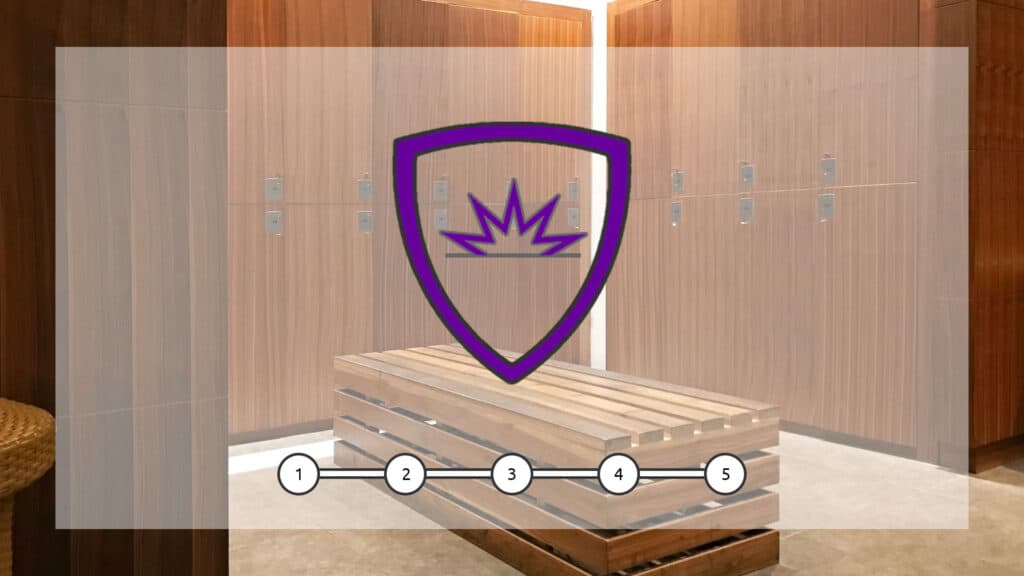Introduction
When your facility has a changing room, it is important to take care of the lockers and make sure that they are preserved well to avoid the unnecessary costs of buying replacements or repairing the ones you have. If your business has many clients using the lockers daily, they could get damaged quite quickly, and the lockers don’t come with a manual on how to take care of them, thus making it challenging to avoid damages.
This article will show how to prevent damage to changing room lockers and maintain them in an excellent state. In case you haven’t purchased the lockers yet, you will see what the best material for durable lockers is. However, if you already have lockers in your changing room, we will explain how to perform maintenance, which cleaning products to avoid, where to position your lockers and more. So here are five ways you can prevent damage to changing room lockers.
1. Select the suitable material
When it comes to locker rooms, there is a wide range of materials and designs. Depending on your situation, you may need one or the other. Here are the main options when it comes to materials: you could opt for a steel locker or high-density polyethene. Steel lockers have high durability and are good for indoor spaces. However, you should be careful because these lockers are very sensitive to humidity which could cause the metal to erode and ruin the locker; thus, if your changing rooms have high humidity because they are close to the showers, you should take that into consideration.
On the other hand, high-density polyethene (HDPE) has very high corrosion resistance. Therefore, it can easily avoid problems with mould and humidity, and it’s even used for underground water pipes for that exact reason. This material is also known for its high impact resistance. However, all these benefits come at a cost. HDPE is made from petroleum, so using this much plastic is not environmentally friendly.

2. Avoid using paint and decorations
One of the administration’s most common mistakes is to paint the lockers or use some material to decorate them. These decorative elements break easily, so damages are almost unavoidable when you opt for them. In the long run, having a minimalistic approach is better because the fewer fancy things you have on your lockers, the more things there are to break. However, if you need to apply decorations for a particular seasonal marketing campaign, do that with extra caution.
3. Avoid certain cleaning products
When it comes to cleaning the lockers, it is pretty straightforward. However, if you have steel lockers, you should take into account which cleaning products you are using because they could damage the material. Steel is especially sensitive to acidic and alkaline products. There is no need to obsess over it but make sure you are not using cleaning products that contain hydrogen peroxide, xylene and acetone.
4. Consistent inspection
Performing consistent inspections of your lockers could make a big difference. It is often easier to spot the problem early and prevent it from getting bigger rather than deal with the after. With consistent inspections, you could spot humidity accumulating in certain places, or a client could leave a wet towel somewhere in the back of the locker. These minor problems have fast solutions, such as removing the towel and applying some maintenance products to prevent it from getting rusty. On the other hand, if you conduct inspections only once a year, you could end up having to throw away the entire locker.
5. Positioning of your lockers
When planning out your changing room, you should, of course, consider where you are putting your lockers. If you place your lockers close to the shower area, be careful with the humidity that the showers are causing because that will erode the metal parts of the lockers. Moreover, do not put the lockers outside or under direct sunlight because that damages the material.
Conclusion
As you can see, there are many ways to avoid damage to the lockers in your changing room. All it takes is some extra care regarding maintenance, cleaning and choosing suitable materials. It is best to start planning how you will maintain your locker rooms in the early stages because then you will be able to select the proper placement for your lockers, preferably away from the sun and humidity. Now that you are an expert at avoiding damage and taking care of your lockers, you should start considering different options that are out there in the market.
To comment on this article, please proceed to the LinkedIn post.
Disclaimer: The opinions and positions expressed in this publication are those of the authors and collaborators and do not necessarily reflect the views or policies of the professional fitness community.

